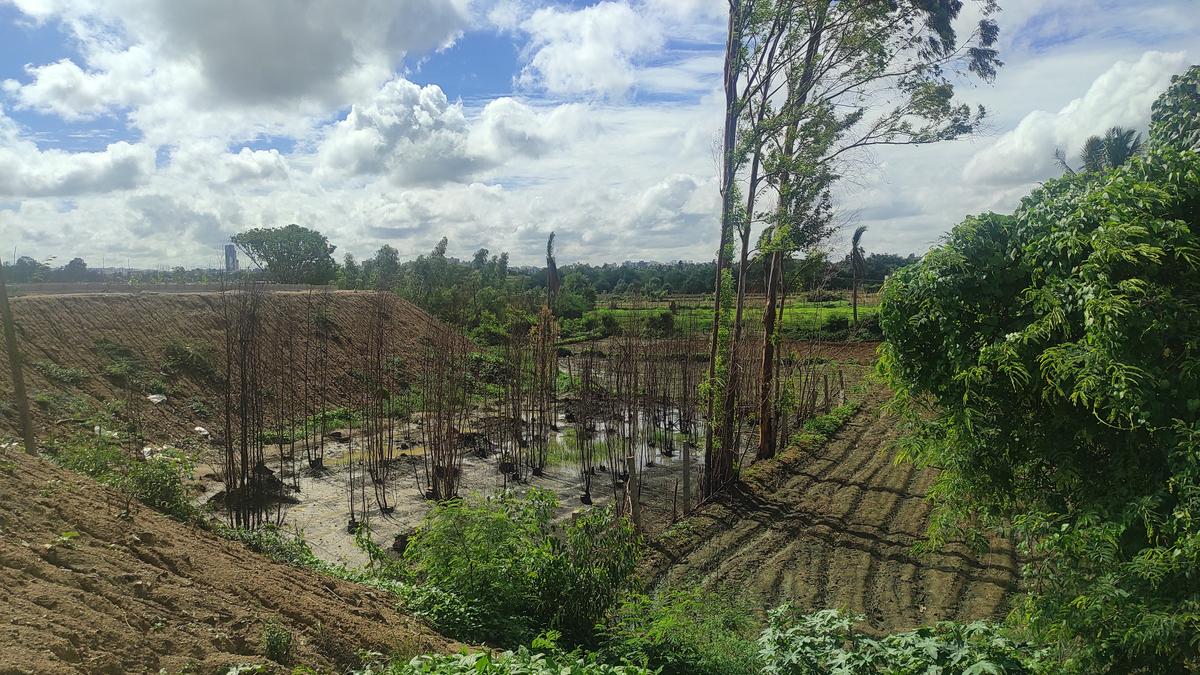
Floods in Anekal taluk: Residents, farmers blame NGO for ‘shoddy’ lake work Premium
The Hindu
Subramani, a farmer from Anekal Taluk says he has been in a difficult situation lately. On his farmland adjacent to Heelalige Lake, he has been growing crops like sapota, broccoli and coconuts for years. The quality of the water from the borewells has been poor, but now on top of that a new problem has left him befuddled. Every time it rains, his land gets flooded resulting in the destruction of crops, he says.
Subramani, a farmer from Anekal taluk, says he has been in a difficult situation lately. On his farmland adjacent to Heelalige Lake, he has been growing crops like sapota, broccoli and coconuts for years. The quality of the water from the borewells has been poor, but now on top of that a new problem has left him befuddled. Every time it rains, his land gets flooded resulting in the destruction of crops, he says.
Navin and Harish, ward councillors from Anekal taluk, are just back from a quick inspection of the Hebbagodi lake. After a harsh summer which saw borewells in the area drying up, the situation has improved, but not solved entirely, they say. ‘It flooded until here last day,’ they say pointing to a tea shop located about 100 meters from the lake.
More than 20 red category industries are located in the catchment area of Yarandahalli Lake. According to residents in the area, many of the factories have been letting out untreated industrial effluents into the lake for years. Around a year ago, the lake was rejuvenated and the inlets from the catchment area closed off to stop the waste from reaching the lake. The lake looks more or less dry now. But locals say that now, even after a small rain, their houses get flooded.
In all the above situations, the victims feel that lake restoration works gone awry is the reason for their plight.
More than 30 lakes in Anekal region were rejuvenated almost a year ago by Malligavad Foundation. Anand Malligavad, founder of the NGO, however, refutes these claims and allege that the real estate mafia, land owners near the lakes and other rivals are behind the allegations.
The networked lake system in Bengaluru which interconnects the lakes in the city through feeder channels and stormwater drains was introduced in 16th century by Kempegowda 1 to harness rainwater mainly for agricultural purposes. For years these lakes acted as natural sponges protecting the city from floods during monsoons.
However, lately, the city has become one of the most prone to urban flooding, thanks to increasing concretisation and rampant encroachments of lake and stormwater drains. While new structures came on top several lakes, many others fell into disuse and were filled with sewage and garbage.











